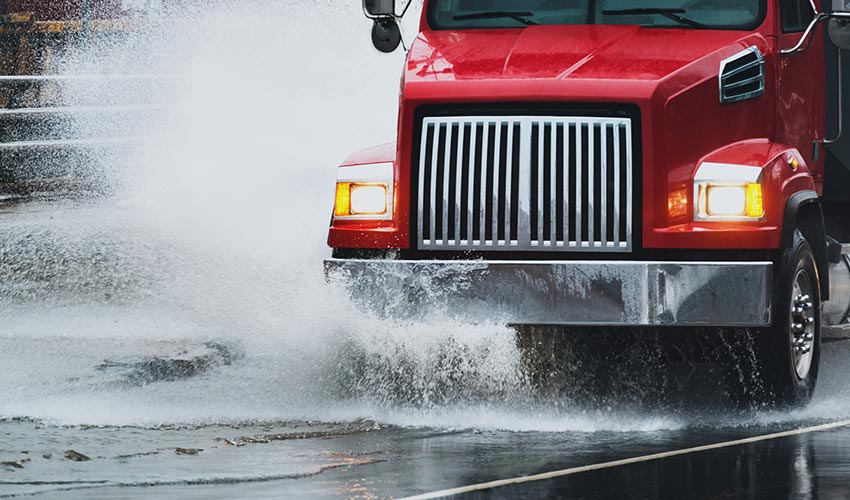Top 5 risks to your commercial auto fleet

When you run a commercial auto fleet these days, you face a number of risks and challenges – including some you might not have faced years ago. Supply chain disruptions, unprecedented labor shortages, and the damaging effects of rising inflation, including the rising cost of new and used vehicles, auto parts, and litigation settlements are pushing up auto insurance rates making it more important than ever to understand the risks to your commercial auto fleet and what you can do to prepare for them.
Here are five of the top trends to be aware of.
-
Increasing costs
Advancements in auto technology, a shortage of vehicles and skilled auto technicians, and a variety of supply chain issues all contribute to increased vehicle and parts costs — making auto claims that much more expensive. In addition, jury verdicts for bodily injury claims are rising at a staggering rate. According to the American Transportation Research Institute, verdicts grew over 50% each year from 2010 to 2018.1
While you can’t do anything about the price of vehicle cameras and sensors, you can take steps to help ensure that your fleet always follows best practice safety procedures to avoid damages in the first place. For example:- Institute regular training for your workforce to ensure that they are up to date on safety measures.
- Continually reinforce your safety policies.
-
Inexperienced drivers
When fleet owners have difficulty finding and keeping experienced drivers, they might have to rely on less experienced drivers, and that can lead to increased risk for accidents.
To give your fleet the best opportunity for success, regardless of experience, consider:
- Checking the off duty driving record of potential employees as part of the hiring process.
- Installing telematics programs in your fleet to track each vehicle’s location, mileage, speed, and driving behaviours such as hard breaking, swerving, or turning.
With telematics, your risk manager can view drivers’ behaviors and use that information to identify areas for training, predict mechanical failures that can keep drivers from breaking down on the road, and even incentivize safe driving.

-
Distracted drivers
According to the CDC, over 3,000 people died and 424,000 people were injured in 2019 in crashes involving a distracted driver.2
To help your drivers stay between the lines and at a safe distance from other drivers, consider:
- Instituting a strict policy of no phone use while driving.
- Purchasing vehicles with advanced safety features such as lane detection and autonomous driving capabilities to alert the driver or readjust the vehicle if it veers out of the lane.
-
Catalytic converter theft
Catalytic converters are used to convert a car’s hazardous exhaust into less harmful gases. But these days, they’re being stolen and sold for the precious metals they contain, namely palladium, platinum or rhodium, which are sold for high prices on the black market.
To prevent thieves from stealing catalytic converters from your fleet (and damaging your vehicles in the process), consider:- Parking your vehicles in a well-lit, enclosed, populated, and secure parking lot or garage.
- Installing catalytic converter anti-theft devices. While thieves might get $50 or more for your catalytic converter, replacing one may cost you hundreds if not thousands of dollars.
- Paint, label or engrave the catalytic converter with the vehicle’s VIN number to make it easier to track down if it’s stolen.
-
Dangerous weather conditions
According to experts, climate change is increasing the frequency and intensity of extreme weather including rain, flooding, droughts, and tornadoes.3 These weather patterns greatly contribute to dangers on the road. On average, 1.2 million vehicles crash each year due to weather conditions.4
To help keep your drivers safe on the road:
- Allow your drivers to take extra stopping time and train them to be alert for changes in road conditions — like going from dry to wet pavement.
- Take advantage of technology available in today’s vehicles such as antilock brakes and electronic stability control.
- Properly maintain your vehicles. Inspect brakes regularly and ensure tires have ample tread and are properly inflated.
For more information about keeping your fleet and drivers safe and protected contact your insurance professional.
Sources
1 American Transportation Research Institute: New Research Documents the Scale of Nuclear Verdicts in the Trucking Industry
2 Centers for Disease Control and Prevention: Distracted Driving
3 United States Environmental Protection Agency: Climate Change Indicators: Weather and Climate
4 U.S. Department of Transportation: How Do Weather Events Impact Roads?
This document is advisory in nature and is offered as a resource to be used together with your professional insurance advisors in maintaining a loss prevention program. It is an overview only, and is not intended as a substitute for consultation with your insurance broker, or for legal, engineering or other professional advice.
Chubb is the marketing name used to refer to subsidiaries of Chubb Limited providing insurance and related services. For a list of these subsidiaries, please visit our website at www.chubb.com. Insurance provided by ACE American Insurance Company and its U.S. based Chubb underwriting company affiliates. All products may not be available in all states. This communication contains product summaries only. Coverage is subject to the language of the policies as actually issued. Surplus lines insurance sold only through licensed surplus lines producers. Chubb, 202 Hall's Mill Road, Whitehouse Station, NJ 08889-1600.

Seeking a business insurance quote?
We can help with that.
